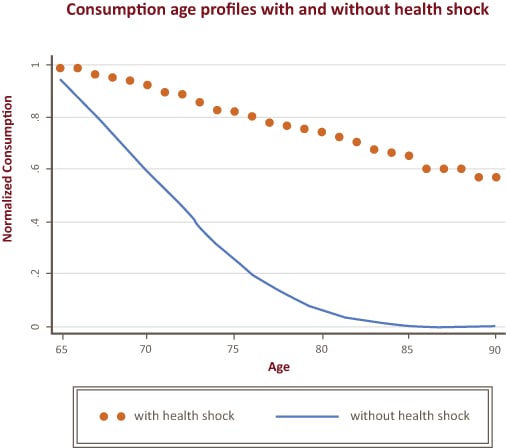
MRRC researchers John Karl Scholz and Ananth Seshadri recently built a model to look into how health and consumption intertwine, using an Euler equation to examine consumption in relation to utility. In this instance, consumption represents spending and health investments, such as eating well or exercising, and utility relates to health. In their model, “a retiree maximizes lifetime utility by making decisions on consumption and health investments in each period. The utility flow in each period depends on both consumption and health capital. Health investments could affect both the probability of surviving to the next period and future health capital conditional on survival. There are health shocks in each period such that both survival and future health capital conditional on survival are [randomly determined].”
The researchers applied their model to Health and Retirement Study (HRS) and Consumption and Activities Mail Survey (CAMS) data. Incorporating health into the model is the project’s contribution, but the authors’ findings also include:
- Consumption generally slows as people age, but health shocks play an important role in slowing down decline.
- Including health investments in the model could help explain the wide differences in consumption-age profiles related to health.
- Health investments, such as physical exercise, have a significant effect on the evolutions of both health and consumption in retirement.
The authors state: “The findings in this paper suggest that public programs like Medicare and Medicaid play an important role in shaping the consumption and health behavior of the retirees, as well as the retirement and saving decisions of working people.” Quantifying the magnitude of these effects might inform the optimal design of such programs.
